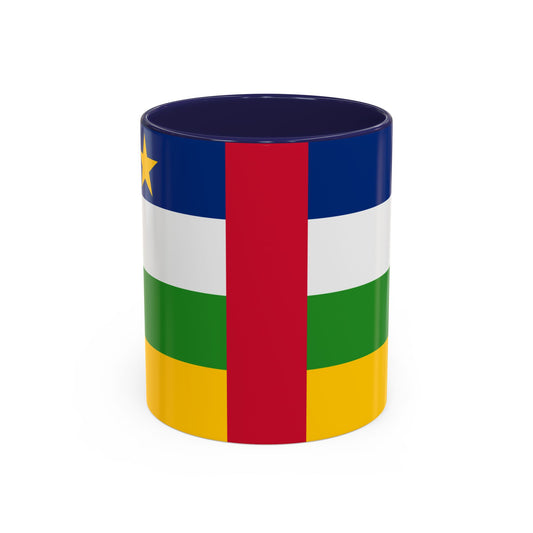-
Central African Republic Pillow
Regular price $22.65 USDRegular priceUnit price / per -
Central African Republic Leather Patch Hat
Regular price $18.85 USDRegular priceUnit price / per -
Central African Republic Flag Sweatshirt
Regular price $34.15 USDRegular priceUnit price / per -
Central African Republic Sweatshirt
Regular price $34.15 USDRegular priceUnit price / per -
Central African Republic Mug
Regular price $11.65 USDRegular priceUnit price / per -
Central African Republic Trucker Cap
Regular price $14.90 USDRegular priceUnit price / per -
Central African Republic Hoodies
Regular price $34.40 USDRegular priceUnit price / per -
Central African Republic T-shirts
Regular price $22.79 USDRegular priceUnit price / per -
Central African Republic Flag Hoodies
Regular price $34.40 USDRegular priceUnit price / per -
Central African Republic Flag on T-shirt
Regular price $22.79 USDRegular priceUnit price / per
Collection: Central African Republic
The Central African Republic flag symbolizes national pride and identity for the country's people. Its rich history and symbolism reflect the country's values and aspirations. We will delve into the flag's design, historical context, symbolism, current relevance, and some fun facts and etiquette.
Overview of the Central African Republic Flag

The flag of the Central African Republic is distinguished by its vibrant array of colors and meaningful design, featuring four horizontal stripes and a central star. From top to bottom, the stripes are colored blue, white, green, and yellow, each carrying its representation and significance. Amid these stripes sits a solitary yellow five-pointed star, serving as a focal point and an emblem of unity and guidance for the nation.
This design embodies the diverse natural and cultural heritage of the Central African Republic and conveys a message of hope and aspiration towards a brighter future. The flag's unique combination of elements makes it a compelling symbol of the country's identity, embodying its people's rich resources and enduring spirit. With each color and symbol carefully chosen, the flag encapsulates the essence of the nation's values and its relentless pursuit of progress and harmony.
Historical Context of the Flag

Adopted on December 1, 1958, the flag of the Central African Republic was introduced shortly before the country declared independence from the French colonial empire in 1960. This period was a significant turning point for the nation as it navigated its way toward self-determination and sovereignty. The flag's design deliberately encapsulated the country's newfound identity and aspirations separate from its colonial past.
Unlike the flags of many African nations that gained independence around the same time, the Central African Republic's flag did not undergo significant changes post-independence, maintaining the original design to this day. This continuity signifies the enduring nature of the symbols and colors chosen to represent the nation at a pivotal moment in its history. The adoption of the flag coincided with a broader wave of decolonization across Africa, making its establishment a national and historic event in the continent's struggle for independence and self-governance.
Symbolism Behind the Design and Colors
Each element of the Central African Republic flag carries deep meaning and reflects the nation's principles, rich resources, and aspirations. The flag's blue stripe symbolizes the sky and freedom, offering a reminder of the limitless possibilities that lie ahead for the country and its citizens. White, a universal symbol of peace and dignity, represents the nation's desire for harmony and tranquility within its borders and with its neighbors. Green, the color of growth and renewal, signifies hope and faith in a prosperous future, acknowledging the importance of the Central African Republic's natural environment and agricultural potential. Yellow, mirroring the abundant mineral resources, particularly diamonds, for which the country is renowned, highlights the wealth beneath its soil that promises economic strength and stability.
Central to the flag, the yellow five-pointed star is a beacon of light guiding the nation toward unity and progress. It is a testament to the country's unified spirit and commitment to collective well-being, shining against the backdrop of diversity in the flag's other colors. This star symbolizes the aspirations of the Central African Republic to rise above challenges and achieve national goals, embodying the hopes and dreams of its people for a brighter future. Together, these colors and symbols weave a narrative of resilience, unity, and optimism, encapsulating the essence of the nation's identity and its journey forward.
Current Relevance of the Flag
Today, the Central African Republic flag maintains its significance as a beacon of national pride and identity amidst the nation’s ongoing challenges. It is a constant fixture at various state functions, flying high during public holidays, official gatherings, and on the uniforms of the country's armed forces. The flag's presence at these events is a vivid reminder of the Central African people's collective aspirations and enduring spirit.
The flag symbolizes hope and resilience despite the nation's struggles with political unrest and social conflicts. It rallies the populace in hardship, reminding them of their shared heritage and a brighter future. In educational settings, the flag instills a sense of national unity and patriotism among the youth, ensuring that the values it embodies are passed down through generations. Its relevance today goes beyond mere representation; it serves as a moral compass, guiding the country toward unity, peace, and prosperity.
Additional Facts and Flag Etiquette
The Central African Republic flag comes with a set of protocols that underscore its importance and reverence within the country. Notably, the flag should be displayed prominently from dawn to dusk, embodying the nation's pride and sovereignty. Ensuring that the flag does not remain hoisted during the nighttime unless illuminated, showcasing respect and honor at all hours is essential.
Care must be taken to handle the flag with the utmost respect, ensuring it never comes into contact with the ground, which could be seen as a sign of disrespect to the nation it represents. Such practices reinforce the flag’s status as a sacred emblem of the Central African Republic's identity and values.
In times of national mourning or significant distress, displaying the flag at half-mast is a powerful symbol of the country's collective sorrow and respect for the deceased or the severity of an event. This practice unites the nation in remembrance and reflection, showing the country's resilience and shared human experience.
Additionally, when displayed alongside flags of other nations, the Central African Republic flag should be positioned in a place of honor, ensuring it is not overshadowed or placed incorrectly about other flags, which could inadvertently communicate disrespect. These etiquettes reflect the people of the Central African Republic have deep respect for their flag and educate others on how to honor this national symbol properly.




















